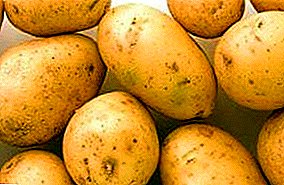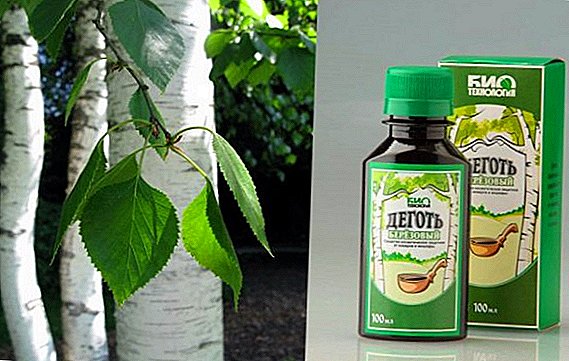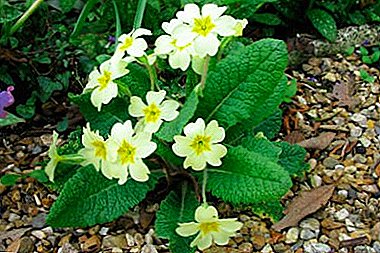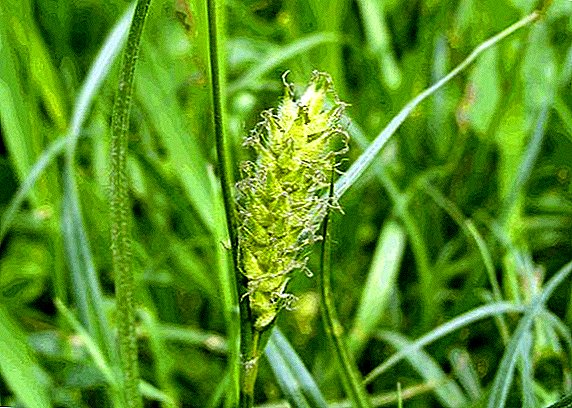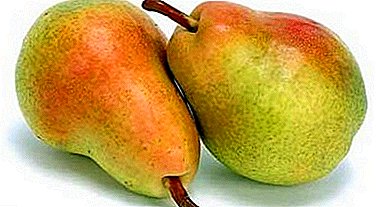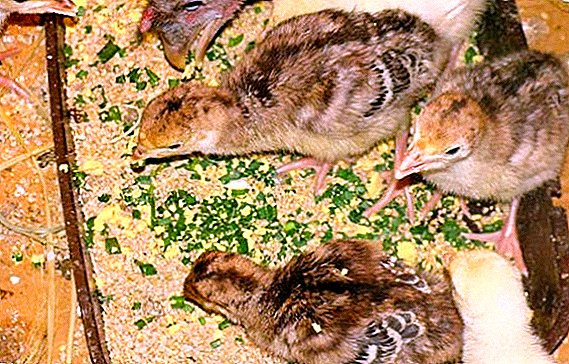 Proper organization of food - the most important task in the care of domestic birds. In order for the chicks to be healthy and develop well, it is necessary to carefully formulate their diet, especially since by the age of six months almost all broiler breeds stop gaining weight. Let's look at how to feed the poults, and what products to introduce as they grow up.
Proper organization of food - the most important task in the care of domestic birds. In order for the chicks to be healthy and develop well, it is necessary to carefully formulate their diet, especially since by the age of six months almost all broiler breeds stop gaining weight. Let's look at how to feed the poults, and what products to introduce as they grow up.
How to feed turkey poults
Daily feeding ration depends on the age of the birds:
| Product / Age | up to 7 days | 7-12 days | 13-20 | 21-29 | 30-40 |
| boiled egg | 2 g | 1 g | - | - | - |
| skim milk (reverse) | 4 g | 9 g | 12 g | 15 g | 10 g |
| low fat cottage cheese | 2 g | 6 g | 10 g | 5 g | - |
| finely ground bran | 4 g | 5 g | 10 g | 12 g | 15 g |
| crushed grain | - | - | 2 g | 9 g | 15 g |
| whole grain | 5 g | 7 g | 14 g | 20 g | 30 g |
| greenery | 4 g | 11 g | 15 g | 20 g | 32 g |
| chalk, shell, etc. | 0.5 g | 0.5 g | 1 g | 1.5 g | 3 g |
| Total | 21.5 g | 39.5 g | 64 g | 82.5 g | 105 g |

Per diem
Newborn turkey poults should be fed light, nutritious and of the highest quality. In day-old chicks, the swallowing reflex has not yet awakened, and they may refuse to feed, so quite often they have to literally put food in their beaks.
The first day turkey poults should be given boiled eggs, low-fat cottage cheese and finely chopped greens. The first feedings are carried out in small portions every three hours. Water should be boiled water at room temperature with a small amount of sugar.
Familiarize yourself with the intricacies of turkey poult breeding in the incubator.
Later, the intervals between meals gradually increase, and the diet becomes more diverse. Boiled millet or other soft grain, wheat bran and crushed chalk or shell rock are added to food as a mineral feed. Also, poults are given skim milk (reverse) and other dairy products (yogurt, etc.). All new products must be introduced gradually so that the chicks are used to them.  In many farms, intensive cultivation technology is practiced; in this case, from the very birth, the diet of chicks is based on industrial feed.
In many farms, intensive cultivation technology is practiced; in this case, from the very birth, the diet of chicks is based on industrial feed.
Important! Newborn turkey poults should be given up to nine times a day, laying it on cardboard sheets or cloth, so as not to damage the soft birds' beaks. Any cereals and porridges must be crumbly, since the sticky structure can lead to problems with the chicks' digestive system.
Weekly
By the 7th day of age, the turkey menu is much more extensive. In addition to boiled eggs, cottage cheese and wet mash, dry cereal mixtures consisting mainly of dough are gradually introduced into their diets. In addition, you can give sunflower meal, crushed peas and boiled potatoes (for a start, 5-10 grams). It is also good to use chalk or crushed shells as a mineral dressing.  In the diet must be a small amount of fish and bone meal and baker's yeast. It still has chopped greens. Turkeys are very fond of green onion feathers, however, it is better to give it during the day, because the onion causes thirst and the chicks should have time to get drunk before sleep.
In the diet must be a small amount of fish and bone meal and baker's yeast. It still has chopped greens. Turkeys are very fond of green onion feathers, however, it is better to give it during the day, because the onion causes thirst and the chicks should have time to get drunk before sleep.
Find out how much a turkey and an adult turkey weigh, and also how to distinguish between poults by gender.
As you grow, you should gradually reduce the number of mealswhile simultaneously increasing the amount of a single meal. At this age, the chicks will already be waiting for feeding, so it is best to hold it at the same time. Cardboard or fabric, which laid out food for newborn chicks, can be replaced with conventional wooden or metal feeders.
Video: feeding poults in the first week of life
Two weeks
At the age of 14 days, the boiled egg leaves the ration of turkey poults and crushed grain is added. By this time, the number of meals is gradually reduced. from 8-9 to 6.
The basis of the diet of two week turkeys is wet mash on skim milk, yogurt or low-fat milk. In addition to those feeds with which the chick ate the first 10 days of life, oats, legumes, buckwheat, cakes, oil cakes, needles, straw and hay are added to its diet.
Did you know? Poultry houses have long noticed that the brighter the color of the male turkey, the more pugnacious it is different. Apparently, this color is a kind of "wedding outfit" that scares competitors. During a skirmish with a rival, the male looks eerily with disheveled feathers and bloodshot eyes.
As for the quantity, the amount of wheat and barley cereals slightly increases. But the number of green fodder has increased almost three times and is 15 grams per day.
Video: feeding poults up to a month
Monthly
By the age of one month, the number of feedings decreases to 6 times a day, and with a sedentary lifestyle, poults - up to 4 times.
The basis of the diet are mash, which can be prepared both in skimming and water. In this case, the mash must be 50% composed of chopped greens. Also, it is possible to gradually introduce table salt.
Read also about the correct feeding of chickens, ducklings, and goslings.
Whole grain is better to offer in the evening feeding, but you can no longer give cottage cheese. The diet should contain crushed grain of oats and wheat, barley groats and wheat bran. 
Two month
At this age, baby feeding occurs. four times a day and has a slight difference from the previous period.
Bran and crushed corn are actively introduced into the diet. Such food takes up most of the volume of food until the slaughter of the bird, because it contributes to the weight gain of turkeys. This also helps germinated grain.
We advise you to read about the benefits and culinary use of turkey eggs, meat, liver.
Also in the food you need to add boiled potato peel, but do not make mash on this broth. To obtain the required amount of vitamins, grated carrots, dried nettle, mountain ash or needles are introduced.
Video: feeding 2 month old turkey poults
After three months
The qualitative composition of nutrition at the age of three months does not practically change; there is a difference only in its daily rate.
Each bird should have 20 grams of meat and bone meal and wheat bran, and crushed grain should be 50 grams per bird. The rate of green fodder is also increasing, which is now 150 grams per bird. Salt and chalk are given at the rate of 5 grams per individual.
Check out the breeds of turkeys for breeding at home.
Composing the diet, reduce or increase the volume of the components should be gradually. As a result, the diet should remain diverse and balanced. 
In 4 months
At this age, birds like breadballs or dumplings made of dough, consisting of corn and oatmeal, wheat bran, yeast and water.
The rest of the turkeys are transferred to the usual feed, and their food is no different from adult individuals.
Important! Turkey poults are very afraid of hypothermia and easily get colds, so it is important to avoid excessive wetting of chicks. It is necessary to change the wet litter in time and install automatic drinkers.
Features of feeding broiler turkey poults
With insufficient, low-quality or unbalanced diet turkeys gain weight very poorly.
The broiler feeding pattern is different in that from the very beginning they are fed starting feed. A few days later, fish meal is added to it in the following ratio: 100 kg of fish meal per 1 kg of compound feed. Also, birds need protein, which is easiest to get from cottage cheese. The daily dose should be 4 grams per chick. Boiled eggs can be another good source of protein.  In the diet of broilers must be greens - clover, nettle, green onions. Also, a good set of weight contribute to the grain, and from three months in the diet, you can enter the potatoes and beets. We should not forget about whey, which is also an excellent source of protein.
In the diet of broilers must be greens - clover, nettle, green onions. Also, a good set of weight contribute to the grain, and from three months in the diet, you can enter the potatoes and beets. We should not forget about whey, which is also an excellent source of protein.
Read also about the breeds and the cultivation of broiler turkeys at home, in particular, the Big 6 cross.
After feeding it is strictly forbidden to leave wet mash in feeders, so that they are not peroxide and do not lead to disruptions in the gastrointestinal tract. Due to the anatomical features, the feed in the intestine of a turkey is longer than that of other birds. Therefore, poor-quality food is more likely to cause health problems. 
Vitamin and mineral supplements
Mineral supplements are needed to meet the needs of the turkey in macro-and micronutrients, especially in calcium. It is very important for the growing body of the chick, because it is the main component of the bones and feathers of the bird. Therefore, already in the first week of life in the diet of poults include foods rich in calcium - chalk and shellfish.
Check out the do-it-yourself guidelines for building a turkey hen.
Later, from about two weeks of age, the chalk and crushed shell no longer mix with the feed, but are poured into separate containers. Chicks themselves will regulate their reception, you only need to monitor the completion of the content. Also, coarse sand, charcoal, bone meal and a small amount of salt are used as a source of minerals. By the way, in addition to the high content of sodium and chlorine, salt has a great effect on appetite.  As vitamin supplements in food turkeys should add greens - clover, alfalfa, green onions. Also, chicks are given chopped cabbage leaves, garden plant tops: turnips, beets, carrots. Moreover, with age, the consumption of greens should grow, and if at the age of one month the chick eats about 30 grams, then this quantity will be tripled by half a year.
As vitamin supplements in food turkeys should add greens - clover, alfalfa, green onions. Also, chicks are given chopped cabbage leaves, garden plant tops: turnips, beets, carrots. Moreover, with age, the consumption of greens should grow, and if at the age of one month the chick eats about 30 grams, then this quantity will be tripled by half a year.
Did you know? A distinctive feature of the turkey - red skin lesions on the neck and head - according to the professor of biology P.A. Manteufel, are "traps" necessary for the body of the bird ultraviolet rays. And their bright color is caused by a dense and extensive network of blood capillaries.
What can not be fed turkey poults
For chicks to grow up healthy, you need not only to know what to feed them, but also what should not give:
- stale and substandard products;
- sour wet mash;
- overdue feed;
- sticky porridges and mash potatoes;
- first ten days - fiber;
- coarse grains;
- wild herbs and berries: hemlock, hemlock, wild rosemary, caustic buttercup, belladonna.

So, now you know how to properly organize the nutrition of poults at home. Properly caring for the young and observing all the rules of feeding, you can certainly count on healthy, active and fast-growing offspring.
Reviews of poultry farmers on feeding turkey poults


So, now you know how to properly organize the nutrition of poults at home. Properly caring for the young and observing all the rules of feeding, you can certainly count on healthy, active and fast-growing offspring.


